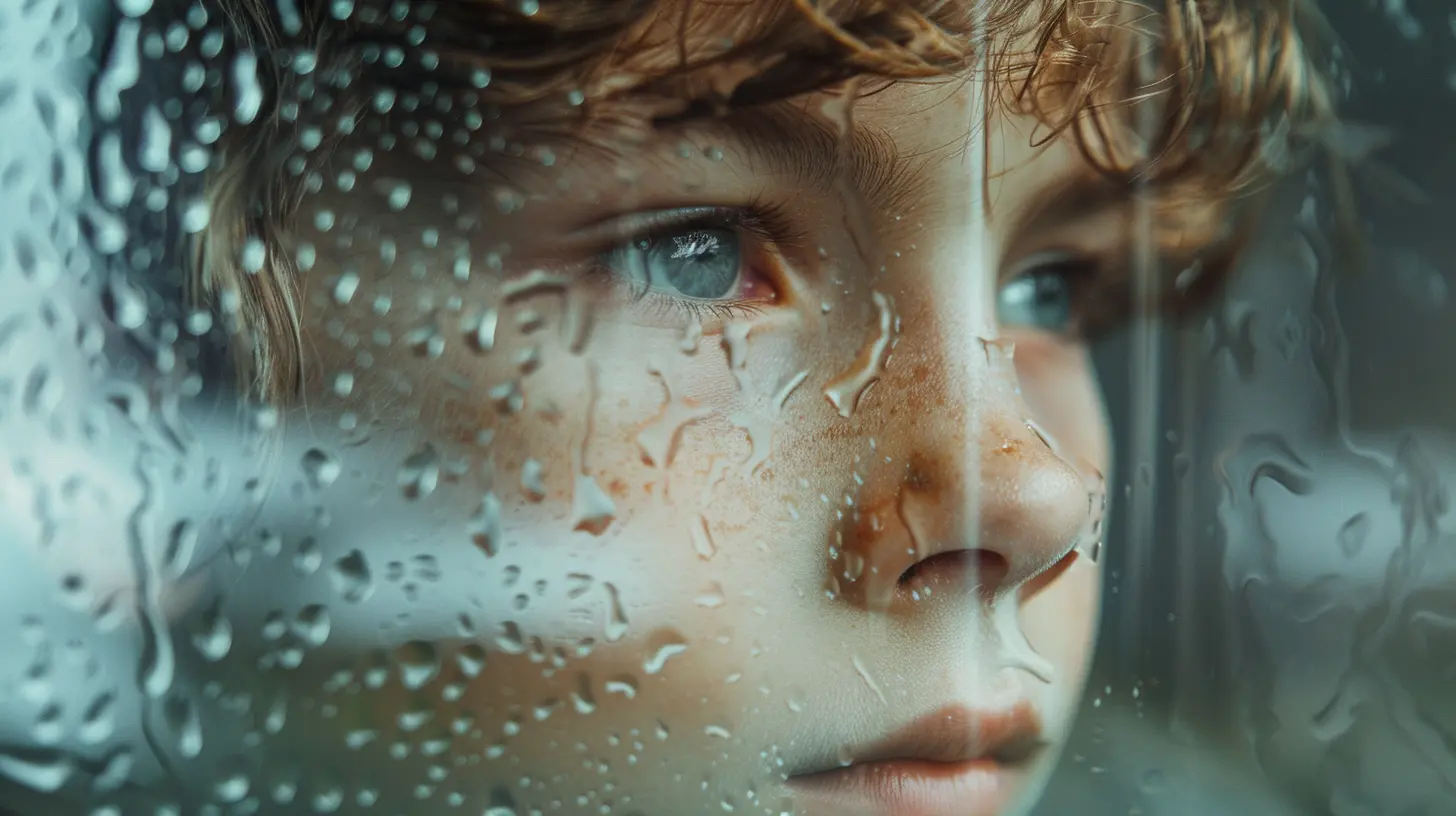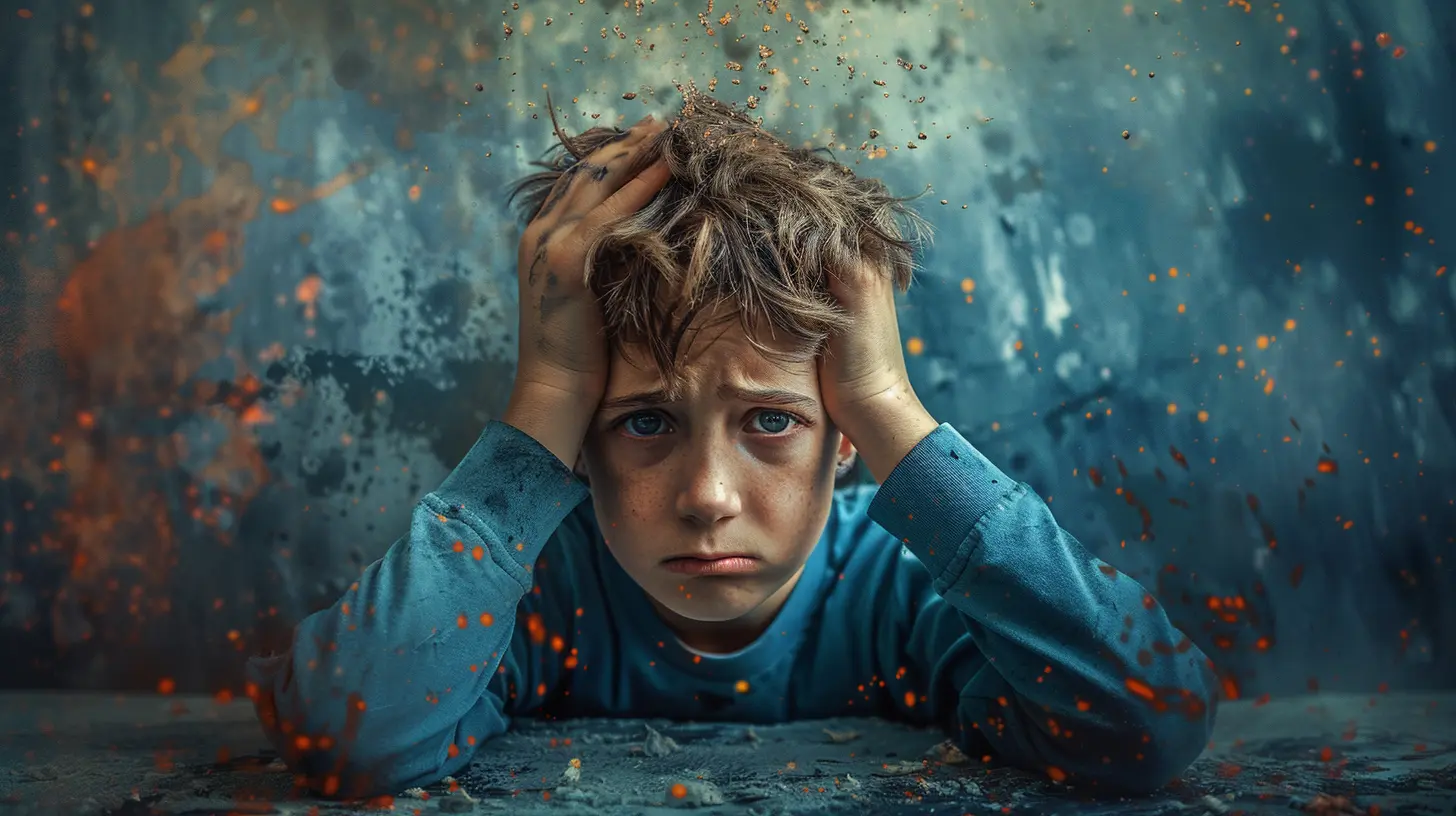The Role of Childhood Trauma in the Development of Personality Disorders
14 July 2025
Childhood is often viewed as a time of innocence, play, and discovery, but for some, it can be a period marked by deep trauma and emotional scars. We all know that our early experiences shape who we become, but what happens when these experiences are overwhelmingly negative? How does childhood trauma influence the development of personality disorders later in life?
This is a complex and delicate subject, but one worth exploring. So, grab a cup of coffee, and let's dive deep into how early emotional wounds can affect us in ways we might not even realize until much later in life.

Understanding Childhood Trauma
Before we get into personality disorders, it's crucial to first understand what childhood trauma is. Trauma during childhood can take many forms—physical abuse, emotional neglect, sexual abuse, bullying, and even witnessing violence or substance abuse in the home. Trauma can also stem from the loss of a parent or caregiver, parental divorce, or growing up in an unstable, chaotic environment.What’s important to note is that trauma is subjective. What might be traumatic for one child may not affect another in the same way. However, when trauma is severe or chronic, it can leave a lasting imprint.
How Trauma Affects Brain Development
Our brains are like sponges during childhood, soaking in everything around us. But trauma can throw a wrench into the works. When children are exposed to high levels of stress, their brains are essentially rewired to stay in a state of hyper-vigilance. This is often referred to as the “fight or flight” response, and while it may have been adaptive in the moment, it can become problematic down the line.For instance, chronic exposure to trauma can affect the development of the amygdala (which processes emotions) and the prefrontal cortex (associated with decision-making and impulse control). The result? A person who is always on edge, quick to react emotionally, and may struggle to regulate their emotions.
When the brain is repeatedly exposed to traumatic experiences, it gets "stuck" in survival mode. This impacts not just how the person perceives the world, but also how they relate to others and themselves.

What Are Personality Disorders?
Before we connect the dots between trauma and personality disorders, let's break down what personality disorders really are. Simply put, a personality disorder is a long-term pattern of thoughts, feelings, and behaviors that are markedly different from what’s expected in a given culture. These patterns are inflexible and pervasive, meaning they affect many areas of a person’s life—relationships, work, and even self-identity.Some common personality disorders include:
- Borderline Personality Disorder (BPD)
- Narcissistic Personality Disorder (NPD)
- Antisocial Personality Disorder (ASPD)
- Avoidant Personality Disorder
- Dependent Personality Disorder
Each of these disorders shows up in different ways, but they all share a common thread: difficulty in forming healthy, stable relationships and managing emotions effectively.
Personality Disorders Are Not "Bad Personalities"
It's worth noting that personality disorders are not the same as having a "bad personality." They're mental health conditions that affect how someone perceives the world and themselves. Just like any other mental health issue, they can be treated and managed with the right support.
The Link Between Childhood Trauma and Personality Disorders
So, how does childhood trauma feed into the development of personality disorders? The connection is stronger than you might think.Trauma and Emotional Dysregulation
One of the biggest ways childhood trauma influences personality disorders is through emotional dysregulation. Imagine for a second that your emotions are like a thermostat; in a healthy system, the thermostat is able to adjust the temperature relatively easily. But for someone who has experienced childhood trauma, that thermostat might be broken, leading to extreme emotional highs and lows that are hard to control.For example, Borderline Personality Disorder (BPD), is characterized by intense emotional swings, fear of abandonment, and impulsive behaviors. Many people with BPD have histories of early trauma—whether that be emotional abuse, neglect, or physical violence. They often struggle with feeling emotionally "held together," which can lead to unstable relationships and self-image problems.
The Development of Maladaptive Coping Mechanisms
Children who endure trauma frequently develop maladaptive coping mechanisms—ways of dealing with stress that aren't particularly healthy. For instance, a child who grows up in a chaotic home may learn to suppress their emotions or lash out in anger as a way to survive. These coping mechanisms may serve a purpose in the short term but can morph into deeply ingrained patterns as the child grows into an adult.Take Antisocial Personality Disorder (ASPD), for instance. People with ASPD often exhibit a lack of empathy and engage in manipulative or even criminal behaviors. Many of these individuals experienced severe neglect or abuse in childhood, leading them to develop a worldview where trust is impossible, and it's "every man for himself."
Attachment Theory and Personality Disorders
Now, let’s talk about attachment theory. This is the idea that the way we bond with our caregivers as infants influences how we form relationships later in life. If a child grows up in an environment where they feel safe, nurtured, and loved, they're more likely to develop what's known as a "secure attachment."On the flip side, children who grow up in environments filled with abuse, neglect, or inconsistent caregiving may develop what's known as an "insecure attachment." They might struggle to trust others, constantly fear abandonment, or become overly dependent on relationships for their sense of self-worth.
Insecure attachment is often linked to personality disorders. For example, people with Dependent Personality Disorder may have been overly reliant on caregivers who were inconsistent or neglectful, leading them to develop an overwhelming fear of being alone or abandoned.
The Role of Genetics
Of course, not everyone who experiences childhood trauma will develop a personality disorder. Genetics also play a role. Some individuals may be more predisposed to developing mental health conditions due to their biological makeup. However, trauma can act as a trigger, bringing out these predispositions in ways that might not have surfaced otherwise.
Breaking the Cycle: Can Childhood Trauma Be Healed?
Now, here’s the million-dollar question: Can the effects of childhood trauma be healed? The good news is, yes, it can—though the process is often long and requires a lot of hard work.Therapy and Treatment Options
Therapy is one of the most effective ways to address the impacts of childhood trauma and personality disorders. Cognitive Behavioral Therapy (CBT), Dialectical Behavior Therapy (DBT), and Trauma-Focused Therapy are often used to help individuals process their trauma, regulate their emotions, and develop healthier coping mechanisms.For example, DBT is particularly helpful for people with Borderline Personality Disorder, as it focuses on teaching emotional regulation, distress tolerance, and interpersonal effectiveness.
Building a Support System
Healing from trauma is not something that happens in isolation. A strong support system—whether that be friends, family, or a therapist—can make a world of difference. The key is finding people who validate your experiences and encourage your growth, rather than reinforcing unhealthy patterns.Self-Compassion and Mindfulness
Another essential element in healing is practicing self-compassion. For many people who have experienced trauma, it's easy to fall into the trap of self-blame or self-criticism. Learning to be kind to yourself, to understand that your reactions are a result of trauma and not a flaw in your character, can be incredibly freeing.Mindfulness practices, such as meditation or journaling, can also help individuals become more aware of their emotional states and triggers, allowing them to manage their reactions more effectively.
Conclusion
The role of childhood trauma in the development of personality disorders is both profound and complex. Early traumatic experiences can shape the way we think, feel, and interact with others, often in ways that are difficult to unravel. But healing is possible. With the right support systems, therapeutic interventions, and a commitment to self-growth, individuals who have experienced childhood trauma can lead fulfilling, meaningful lives.So, if you or someone you know is struggling with the long-lasting effects of childhood trauma, remember: it's never too late to seek help, and it's certainly never too late to heal.
all images in this post were generated using AI tools
Category:
Personality DisordersAuthor:

Paulina Sanders
Discussion
rate this article
1 comments
Rhett King
Fascinating link between trauma and identity!
August 10, 2025 at 4:58 PM

Paulina Sanders
Thank you! I'm glad you found the connection intriguing. It highlights the profound impact early experiences can have on our sense of self.


